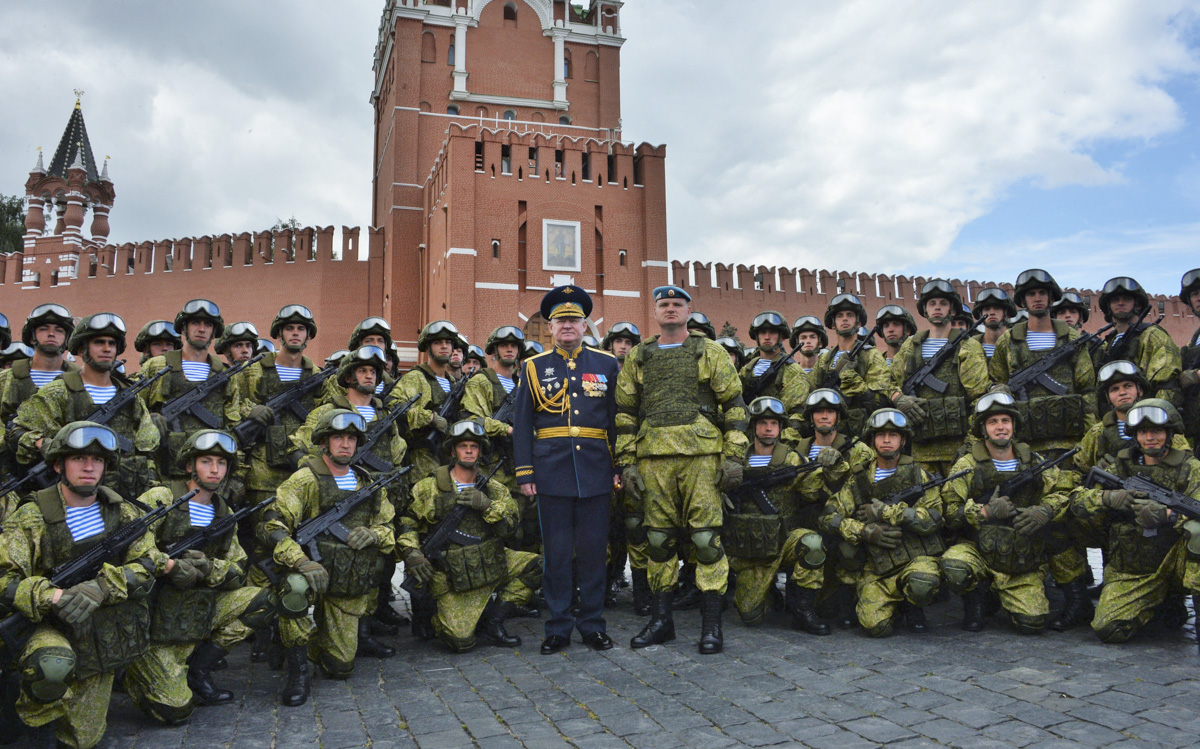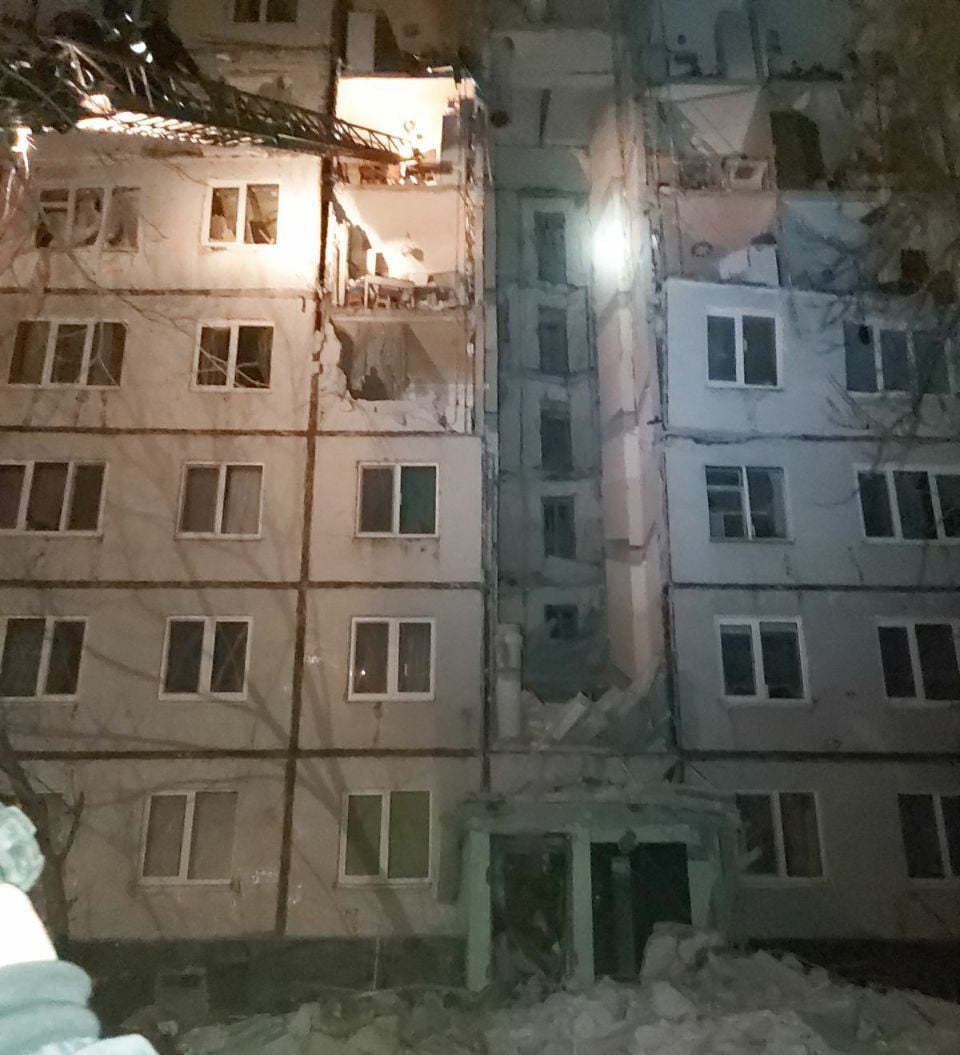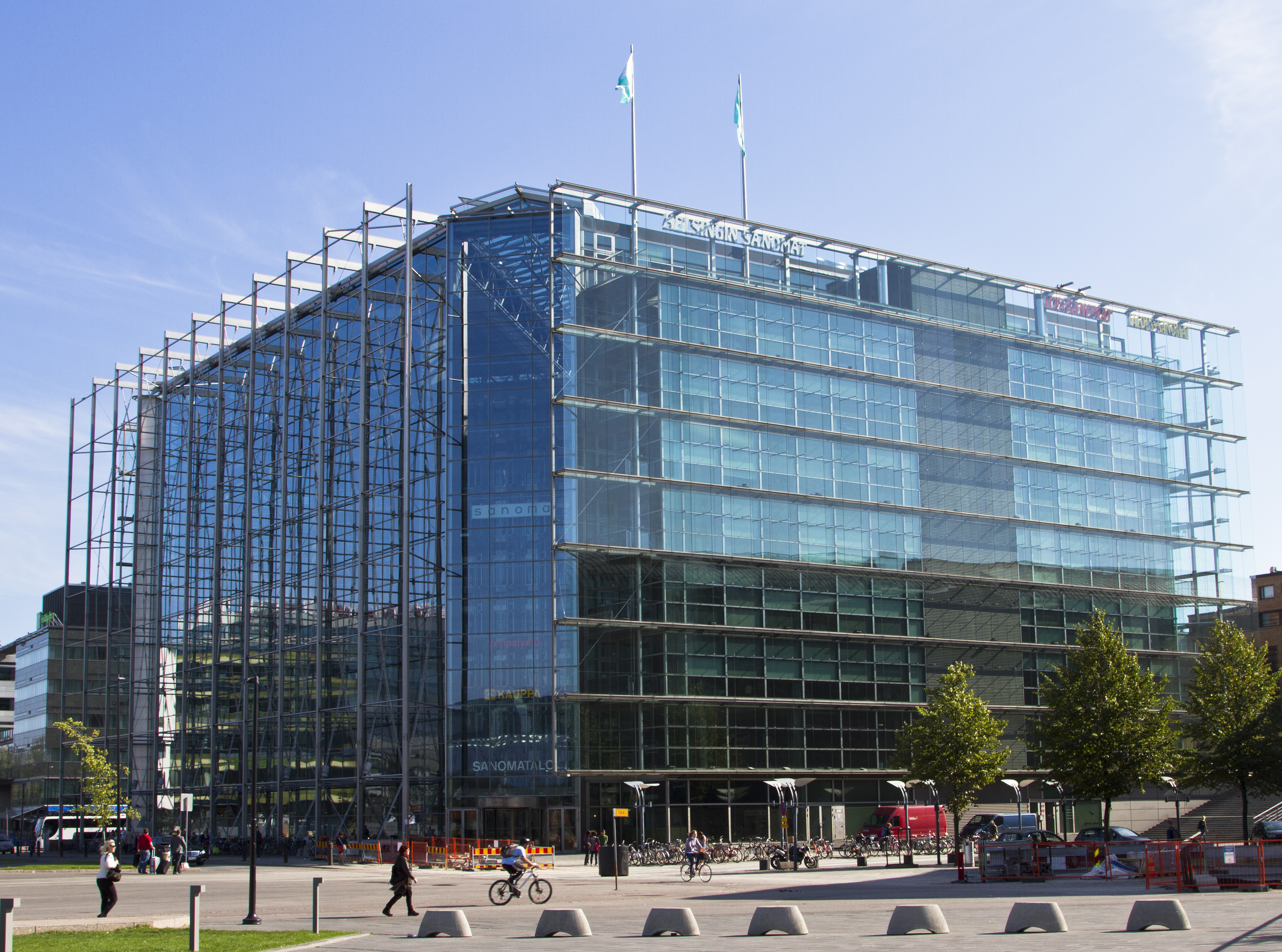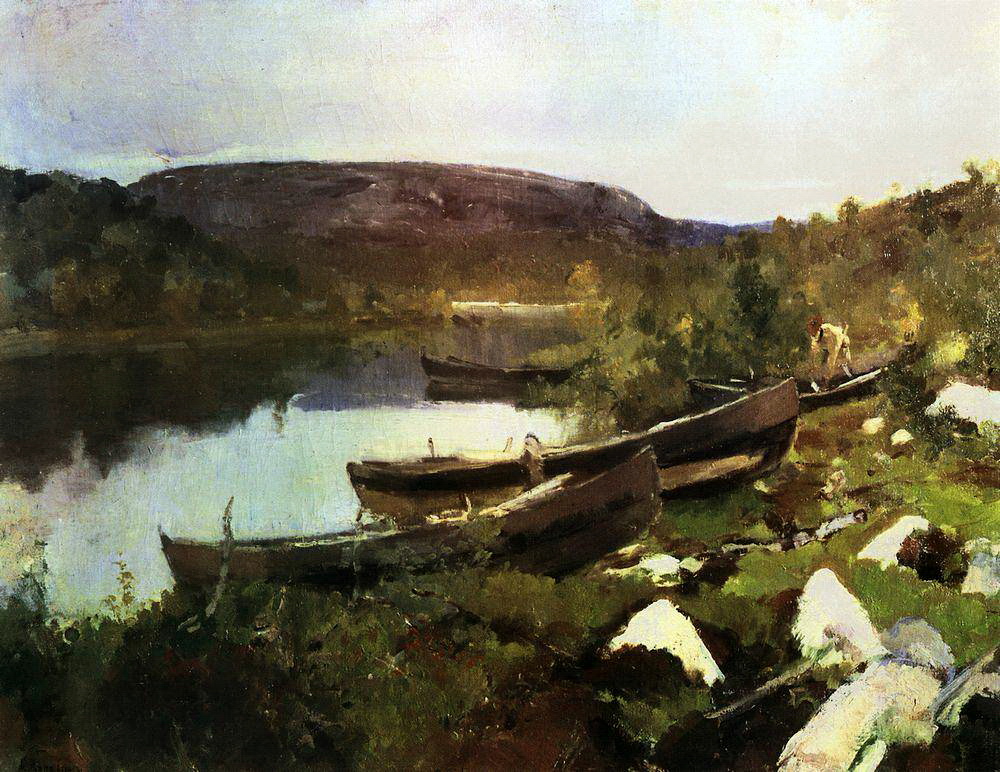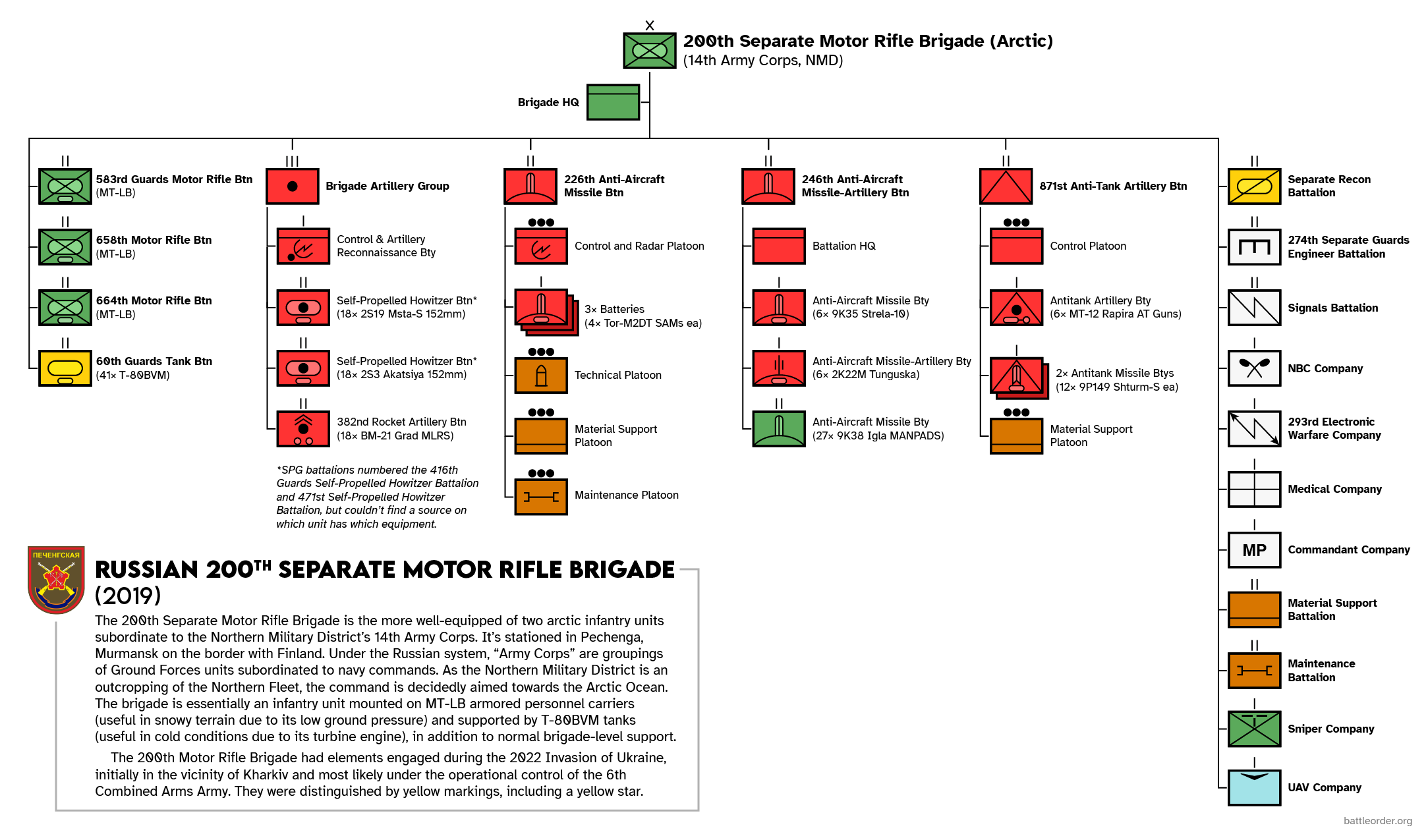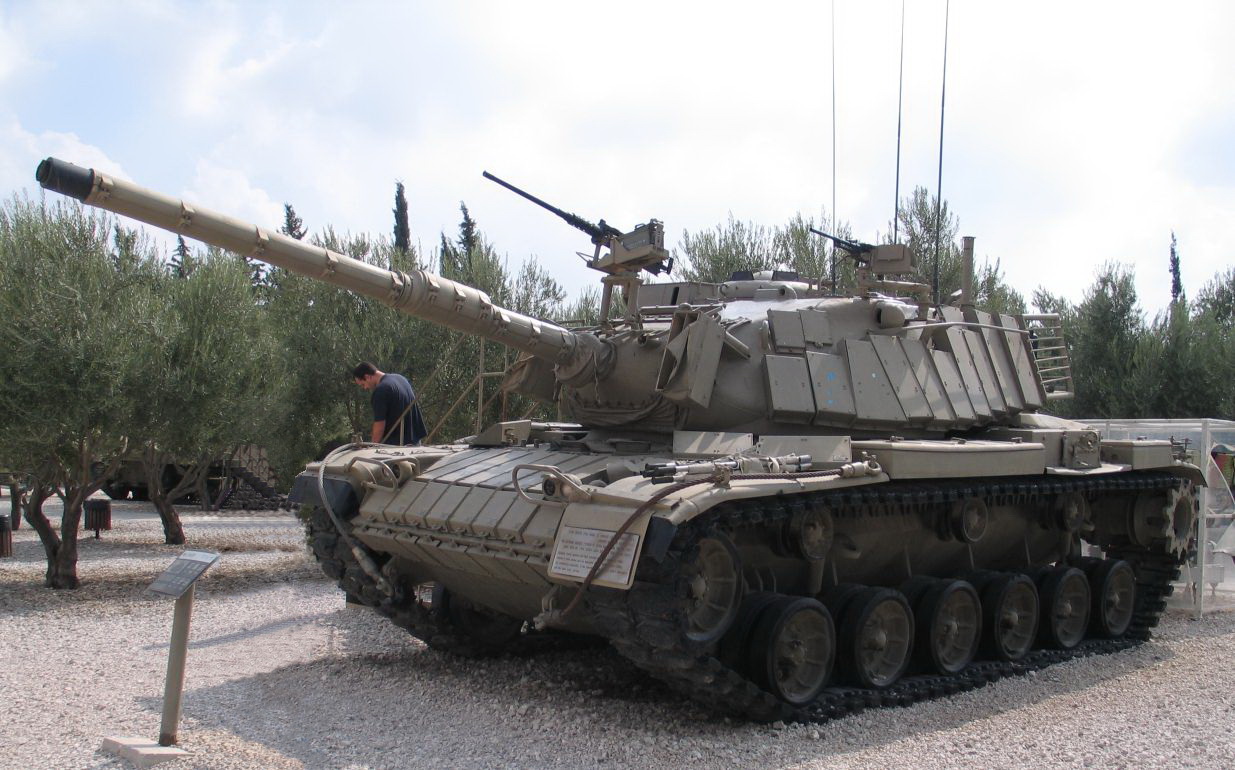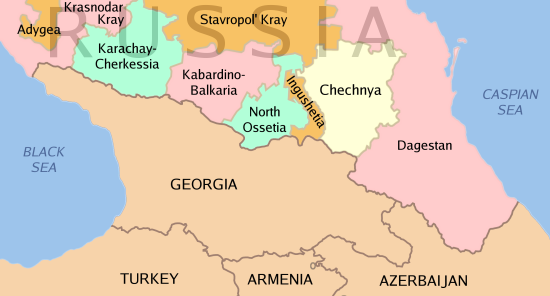|
138th Guards Motor Rifle Brigade
, image = , dates = 1 December 1997present , country = , branch = , type = Mechanized infantry , command_structure = 6th Combined Arms Army Western Military District , garrison = Kamenka, Leningrad Oblast , battles = 2022 Russian invasion of Ukraine , decorations = , battle_honours = , current_commander = Colonel (Guards) Sergei Maksimov , identification_symbol = , identification_symbol_label = The 138th Guards Separate Motor Rifle Brigade (138th MRB) (russian: 138-я отдельная гвардейская мотострелковая бригада) is a formation of the Russian Ground Forces. It is stationed in the Western Military District, in the village of Kamenka, Vyborgsky District, Leningrad Oblast. It is Military unit No. 025 ... [...More Info...] [...Related Items...] OR: [Wikipedia] [Google] [Baidu] |
Mechanized Infantry
Mechanized infantry are infantry units equipped with armored personnel carriers (APCs) or infantry fighting vehicles (IFVs) for transport and combat (see also mechanized force). As defined by the United States Army, mechanized infantry is distinguished from motorized infantry in that its vehicles provide a degree of armor protection and armament for use in combat, whereas motorized infantry are provided with "soft-skinned" wheeled vehicles for transportation only.Infantry Division Transportation Battalion and Transportation, Tactical Carrier Units. (1962). United States: Headquarters, Department of the Army. p. 15 Most APCs and IFVs are fully tracked or are all-wheel drive vehicles (6×6 or 8×8), for mobility across rough ground. Some nations distinguish between mechanized and armored (or armoured) infantry, designating troops carried by APCs as mechanized and those in IFVs as armored. The support weapons for mechanized infantry are also provided with motorized transport ... [...More Info...] [...Related Items...] OR: [Wikipedia] [Google] [Baidu] |
Groznyy
Grozny ( rus, Грозный, p=ˈgroznɨj; ce, Соьлжа-ГӀала, translit=Sölƶa-Ġala), also spelled Groznyy, is the capital city of Chechnya, Russia. The city lies on the Sunzha River. According to the 2010 census, it had a population of 271,573 — up from 210,720 recorded in the 2002 census, but still only about two-thirds of 399,688 recorded in the 1989 census. It was previously known as (until 1870). Names In Russian, "Grozny" means "fearsome", "menacing", or "redoubtable", the same word as in Ivan Grozny (Ivan the Terrible). While the official name in Chechen is the same, informally the city is known as "" (""), which literally means "the city () on the Sunzha River ()". In 1996, during the First Chechen War, the Chechen separatists renamed the city Dzhokhar-Ghala ( ce, Джовхар-ГӀала, Dƶovxar-Ġala), literally Dzhokhar City, or Dzhokhar/Djohar for short, after Dzhokhar Dudayev, the first president of the Chechen Republic of Ichkeria. I ... [...More Info...] [...Related Items...] OR: [Wikipedia] [Google] [Baidu] |
Andrey Serdyukov
Andrey Nikolaevich Serdyukov (; born 4 March 1962) is a Russian Armed Forces colonel general and commander of the Russian Airborne Troops from 2016 to 2022. Serdyukov served in the Soviet Airborne Forces as a junior officer and rose to battalion command. He graduated from the Frunze Military Academy and became a deputy regimental commander in the Russian Airborne Troops and then a regimental commander. Serdyukov fought in the First Chechen War and served as a deputy brigade commander in Kosovo, participating in the Incident at Pristina airport. Between 2002 and 2003 he led the 138th Guards Motor Rifle Brigade and in 2004 took command of the 106th Guards Airborne Division. After graduating from the Military Academy of the General Staff in 2009, Serdyukov became deputy commander of the 5th Red Banner Army, taking command of the army in 2011. In 2013, he became deputy commander and then chief of staff of the Southern Military District. While in this position, Serdyukov led troops i ... [...More Info...] [...Related Items...] OR: [Wikipedia] [Google] [Baidu] |
Battle Of Kharkiv (2022)
The Battle of Kharkiv was a military engagement that took place from February to May 2022 in and around the city of Kharkiv in Ukraine, as part of the northeastern Ukraine offensive and eastern Ukraine offensive during the 2022 Russian invasion of Ukraine. Kharkiv, located just south of the Russia–Ukraine border and a predominately Russian-speaking city, is the second-largest city in Ukraine and was considered a major target for the Russian military early in the invasion. By 13 May, Ukrainian forces pushed Russian units attempting to encircle the city back towards the Russian border. Additionally, it was reported that Russia had withdrawn units from the area. The Institute for the Study of War opined that Ukraine had "likely won the battle of Kharkiv". However, bombardment continued, and by 20 May, Russian forces were again shelling Kharkiv city. As a result of the subsequent counteroffensive in the Kharkiv Oblast, Russian forces located close to the city were pushed back, ... [...More Info...] [...Related Items...] OR: [Wikipedia] [Google] [Baidu] |
Helsingin Sanomat
''Helsingin Sanomat'', abbreviated ''HS'' and colloquially known as , is the largest subscription newspaper in Finland and the Nordic countries, owned by Sanoma. Except after certain holidays, it is published daily. Its name derives from that of the Finnish capital, Helsinki, where it is published. It is considered a newspaper of record for Finland. History and profile The paper was founded in 1889 as ''Päivälehti'', when Finland was a Grand Duchy under the Tsar of Russia. Political censorship by the Russian authorities, prompted by the paper's strong advocacy of greater Finnish freedoms and even outright independence, forced Päivälehti to often temporarily suspend publication, and finally to close permanently in 1904. Its proprietors re-opened the paper under its current name in 1905. Founded as the organ of the Young Finnish Party, the paper has been politically independent and non-aligned since 1932. During the Cold War period ''Helsingin Sanomat'' was among the Finn ... [...More Info...] [...Related Items...] OR: [Wikipedia] [Google] [Baidu] |
Murmansk Oblast
Murmansk Oblast (russian: Му́рманская о́бласть, p=ˈmurmənskəjə ˈobləsʲtʲ, r=Murmanskaya oblast, ''Murmanskaya oblast''; Kildin Sami: Мурман е̄ммьне, ''Murman jemm'ne'') is a federal subject (an oblast) of Russia, located in the northwestern part of the country. Its administrative center is the city of Murmansk. As of the Russian Census (2010), 2010 Census, its population was 795,409. Geography Geographically, Murmansk Oblast is located mainly on the Kola Peninsula almost completely north of the Arctic Circle''2007 Atlas of Murmansk Oblast'', p. 2 and is a part of the larger Lapland (region), Sápmi (Lapland) region that spans over four countries.Ratcliffe, p. 1 The oblast borders with the Republic of Karelia in Russia in the south, Lapland, Finland, Lapland Region in Finland in the west, Troms og Finnmark, Troms and Finnmark County in Norway in the northwest, and is bounded by the Barents Sea in the north and the White Sea in ... [...More Info...] [...Related Items...] OR: [Wikipedia] [Google] [Baidu] |
Pechenga (urban-type Settlement), Murmansk Oblast
Pechenga (russian: Пече́нга; Finnish and sv, Petsamo; no, Petsjenga; se, Beahcán; sms, Peäccam) is an urban locality (an urban-type settlement) in Pechengsky District, Murmansk Oblast, Russia. Municipally, it is incorporated as Pechenga Urban Settlement of Pechengsky Municipal District. Population: History The Pechenga area has been indigenously inhabited by the Finnic KvensJulku, Kyösti: ''Kvenland - Kainuunmaa''. With English summary: ''The Ancient territory of Kainuu''. Oulu, 1986. and the Sami. The settlement was founded by Russians as the Pechenga Monastery in 1533 at the influx of the Pechenga River into the Barents Sea, 135 km west of modern Murmansk. St. Tryphon of Pechenga, a monk from Novgorod is considered to be the founder of Pechenga Monastery. In 1533, the area became part of Russia. Inspired by the model of the Solovki, Tryphon wished to convert the local Sami population to Christianity and to demonstrate how faith could flourish i ... [...More Info...] [...Related Items...] OR: [Wikipedia] [Google] [Baidu] |
200th Independent Motor Rifle Brigade
The 200th Separate Motor Rifle Brigade is a military formation of the 14th Army Corps, part of the Northern Military District, based at Pechenga in Murmansk Oblast. The brigade was formed from the 131st Motor Rifle Division in 1997 and was one of the two Russian Arctic warfare brigades. In 2014, brigade units participated in the War in Donbas. In 2022, brigade units participated in the 2022 Russian invasion of Ukraine. Interrogations of Russian prisoners of war established that the brigade was in Ukraine and suffered heavy losses in the Battle of Kharkiv. History Formation The 200th Brigade was formed from the former 131st Motor Rifle Division in 1997. It inherited the honorifics "Pechenga Order of Kutuzov" from the division. Transition to professional contract status was planned to finish at the end of 2006. At the beginning of April 2006, the brigade had about 700 professional personnel, practically all sergeant positions having been filled by kontraktniks (russi ... [...More Info...] [...Related Items...] OR: [Wikipedia] [Google] [Baidu] |
Guards Unit
Guards units (russian: Гвардия, translit=Gvardiya) were elite units and formations in the Soviet Armed Forces that continue to exist in the Russian Armed Forces and other post-Soviet states. These units were awarded Guards status after distinguishing themselves in wartime service, and are considered to have elite status. The Guards designation originated during World War II, its name coming both from the Russian Imperial Guard, and the old Bolshevik Red Guards. History The title of Guards within the Soviet Armed Forces was first introduced on 18 September 1941, at the direction of the Headquarters of the Supreme High Command ( Stavka). By order No. 308 of the People's Commissar of Defence, the 100th, 127th, 153rd and 161st Rifle Divisions were renamed the 1st, 2nd, 3rd and 4th Guards Rifle Divisions, respectively, for their distinguished service during the 1941 Yelnya Offensive. The Soviet 316th Rifle Division was renamed the 8th Guards Rifle Division on 18 Nove ... [...More Info...] [...Related Items...] OR: [Wikipedia] [Google] [Baidu] |
45th Rifle Division (Soviet Union)
The 45th Rifle Division was a Red Army infantry division formed originally during the Russian Civil War that fought in World War II and then served through the Cold War in the Leningrad Military District. The division was originally formed 16 June 1919 in the Odessa raion from the 5th Ukrainian Rifle Division. Civil War service The 45th Rifle Division was formed from the 5th Ukrainian Rifle Division around Odessa. In August 1919, during the Odessa Operation (1919), it was cut off and retreated between the White armies and the Ukrainian People's Army to reach Bolshevik-held territory near Korosten. Second World War service First Formation It was attached to the Kiev Special Military District/Soviet Southwestern Front at the outbreak of World War II, as part of the 15th Rifle Corps, 5th Army. Under Colonel V.P. Solokov, it was earmarked to defend the mid-Volga River islands behind the hard-pressed 62nd Army on 7 October 1942. However it was deployed in the Battle of Stalingrad p ... [...More Info...] [...Related Items...] OR: [Wikipedia] [Google] [Baidu] |
Reactive Armour
Reactive armour is a type of vehicle armour that reacts in some way to the impact of a weapon to reduce the damage done to the vehicle being protected. It is most effective in protecting against shaped charges and specially hardened kinetic energy penetrators. The most common type is ''explosive reactive armour'' (ERA), but variants include ''self-limiting explosive reactive armour'' (SLERA), ''non-energetic reactive armour'' (NERA), ''non-explosive reactive armour'' (NxRA), and electric armour. NERA and NxRA modules can withstand multiple hits, unlike ERA and SLERA. A second hit in exactly the same location may potentially penetrate any of those, as the armour in that spot is compromised. Reactive armour is intended to counteract anti-tank munitions that work by piercing the armour and then either kill the crew inside, disable vital mechanical systems, or create spalling that disables the crew — or all three. Reactive armour can be defeated with multiple hits in the same pla ... [...More Info...] [...Related Items...] OR: [Wikipedia] [Google] [Baidu] |
Second Chechen War
The Second Chechen War (russian: Втора́я чече́нская война́, ) took place in Chechnya and the border regions of the North Caucasus between the Russia, Russian Federation and the Chechen Republic of Ichkeria, from August 1999 to April 2009. In August 1999, Islamist fighters from Chechnya War of Dagestan, infiltrated Russia's Dagestan region, violating Russia's borders. During the initial campaign, Russians, Russian military and pro-Russian Chechens, Chechen paramilitary forces faced Chechen separatists in open combat and seized the Chechen capital Grozny after a winter Battle of Grozny (1999–2000), siege that lasted from December 1999 until February 2000. Russia established direct rule over Chechnya in May 2000 although Chechen militant Resistance movement, resistance throughout the North Caucasus region continued to inflict heavy Russian casualties and challenge Russian political control over Chechnya for several years. Both sides carried out attacks a ... [...More Info...] [...Related Items...] OR: [Wikipedia] [Google] [Baidu] |


